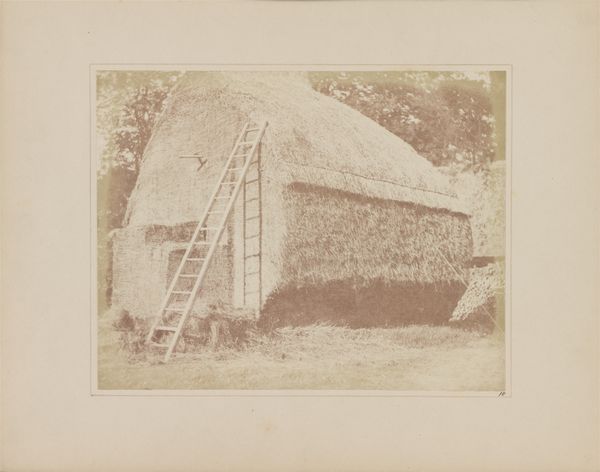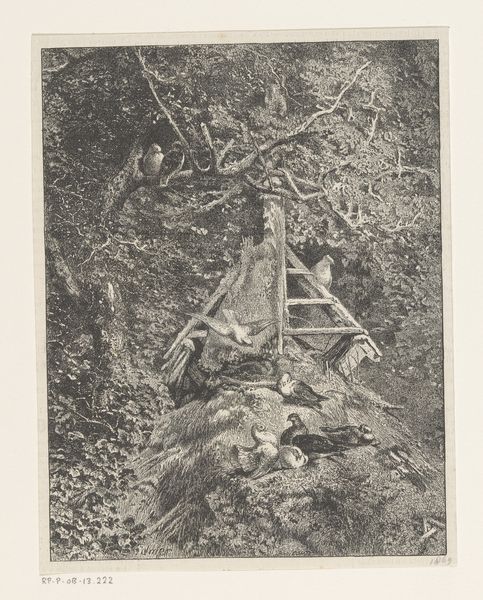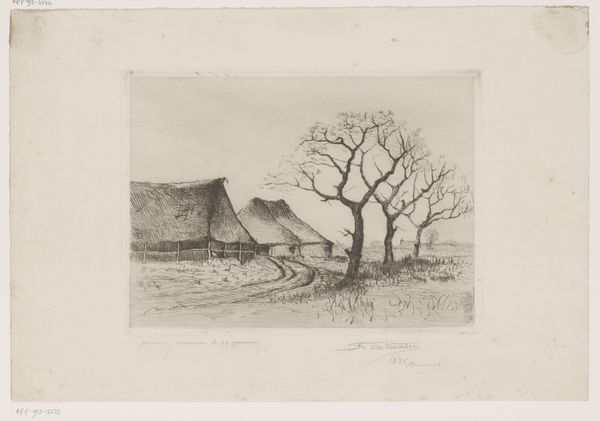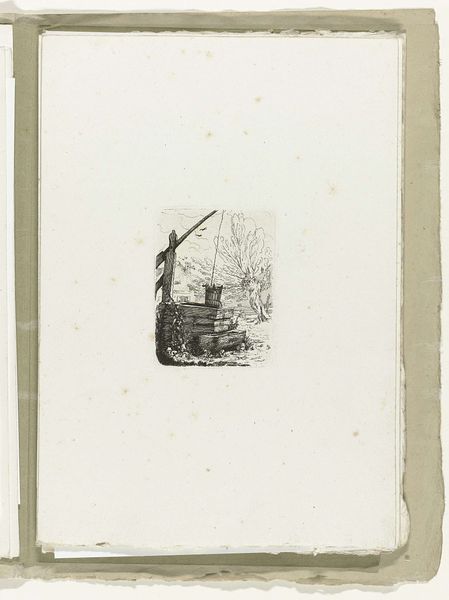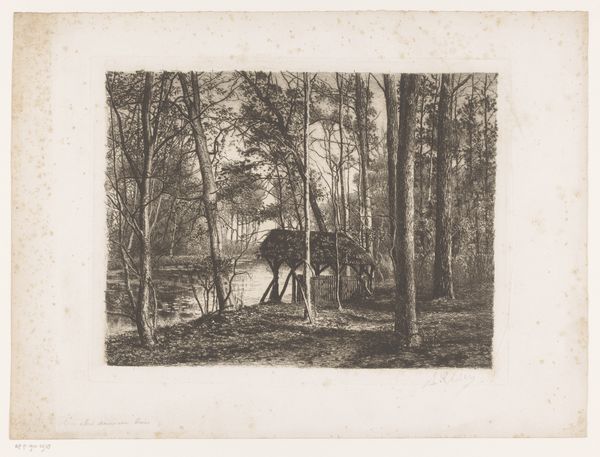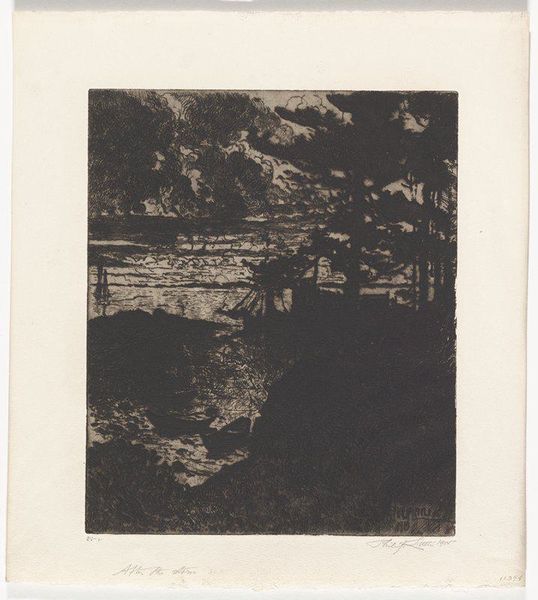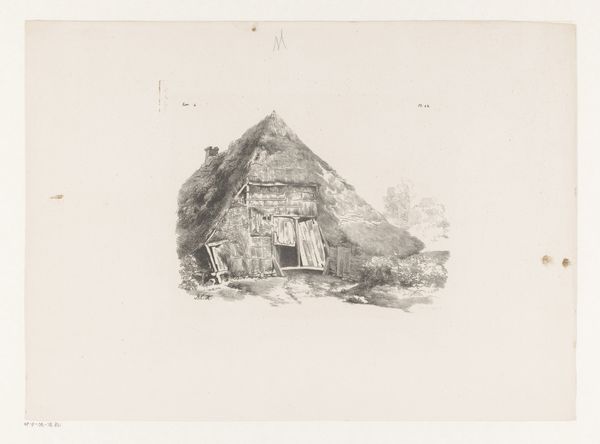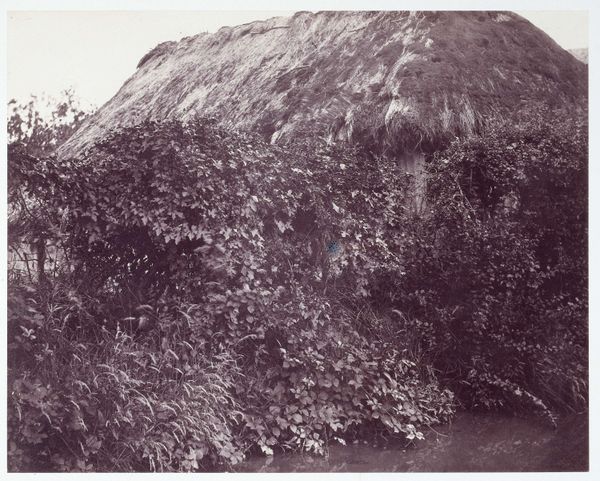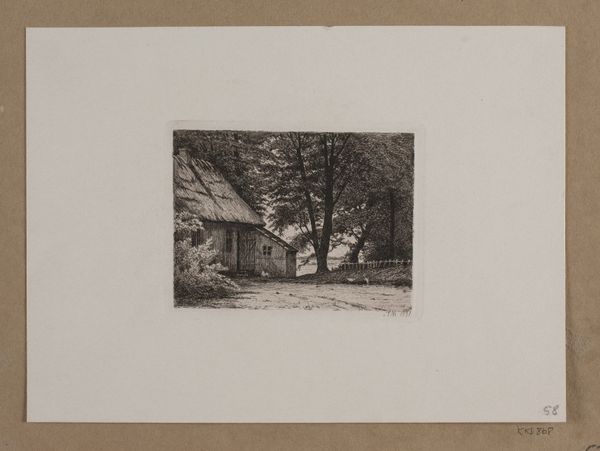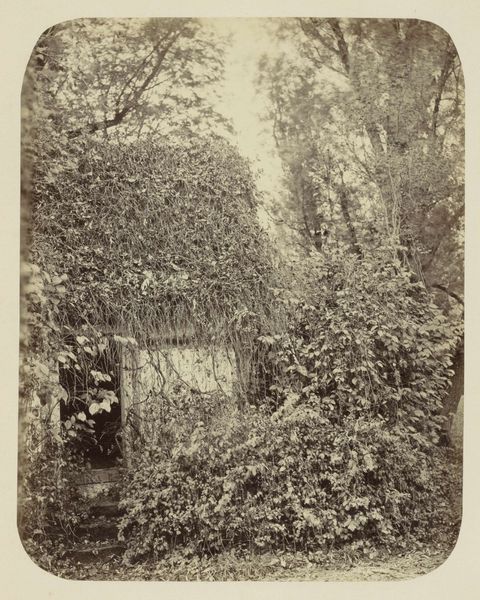
print, paper, photography
# print
#
landscape
#
paper
#
photography
#
england
#
romanticism
#
realism
Dimensions: 16.2 × 21 cm (image); 18.9 × 23.1 cm (paper)
Copyright: Public Domain
Curator: Here we have William Henry Fox Talbot's "The Haystack," a print dating back to 1844. One of the earliest examples of photography, its origins are here, on paper. Editor: Well, immediately, the sepia tones give it this nostalgic haze. It feels less like looking *at* a haystack and more like remembering one from a dream. A ladder propped against the haystack tells a hidden tale about labour, survival, and the tools that define those human endeavours. Curator: Indeed. Talbot’s calotype process—developed just a few years prior—allowed for multiple prints from a single negative, a radical shift from the unique daguerreotypes of the time. Note how the texture of the haystack dominates the frame, its materiality almost palpable, while the surrounding landscape is merely suggested, a soft backdrop. Editor: It's funny, isn't it? The "flaws" in early photography are now what give it its character. That slight blur, the limited tonal range—they whisper of another time, a simpler existence, a place where this humble haystack mattered, and now that scene matters to us looking at this art piece. Curator: Absolutely. The ladder is an important visual element. Its diagonal disrupts the horizontality of the hay bales, and contributes to a tension that draws the eye upwards and suggests dynamism within a static scene. Editor: Exactly. The photographer wasn't simply documenting. They were composing—telling us that sometimes, the simplest subjects, seen through the lens of intent, become incredibly profound and become beautiful even! And you think, someone decided *this* was worth capturing? Incredible! Curator: Considering "The Haystack" within the broader context of early photography reveals how artists of the time grappled with questions of representation and reality. Talbot wasn't merely documenting reality but interpreting it. Editor: That makes it more romantic than it even appears! All I see is something basic turned into gold... I guess that makes "The Haystack" the original #blessed. Curator: It is an apt way of capturing our impressions when considering how Talbot turned the ordinary into the extraordinary through science, vision, and, as you pointed out, through something a little akin to alchemy! Editor: Well, "The Haystack" certainly offers a powerful meditation on time, technology, and our relationship with the natural world.
Comments
No comments
Be the first to comment and join the conversation on the ultimate creative platform.
